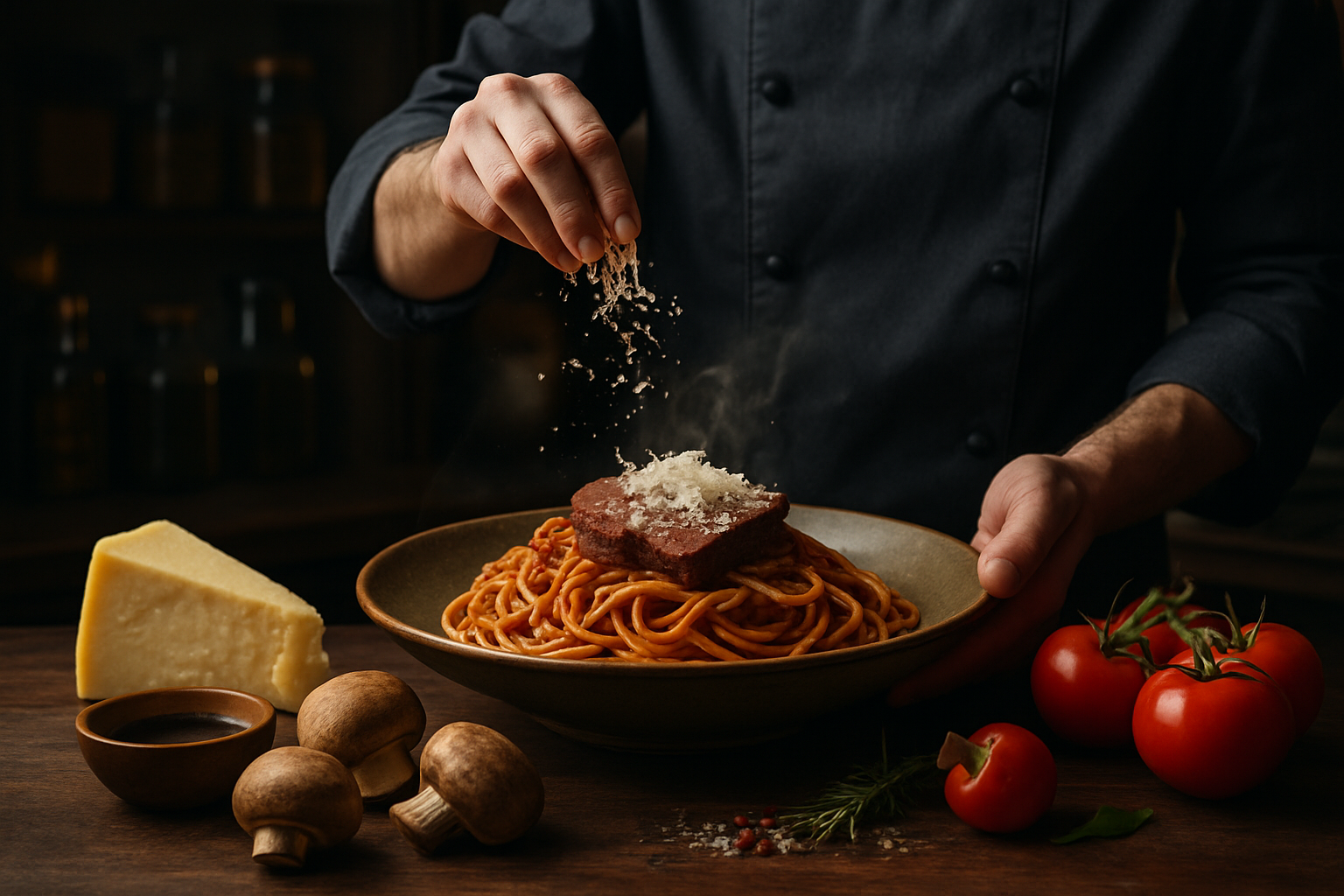Savory Umami Bombs: Elevating Dishes with Flavor-Packed Ingredients
Umami, the elusive fifth taste, has captivated chefs and food enthusiasts alike. This article delves into the world of umami-rich ingredients that can transform ordinary meals into extraordinary culinary experiences. From traditional Asian staples to unexpected Western additions, we'll explore how to harness the power of umami to create unforgettable dishes.

Umami Powerhouses from the Sea
The ocean is a treasure trove of umami-rich ingredients that can elevate any dish. Kombu, a type of dried kelp, is a staple in Japanese cuisine and forms the base of dashi, a fundamental soup stock. Its high glutamate content makes it an excellent addition to broths, stews, and marinades. Another seafood umami bomb is dried bonito flakes, known as katsuobushi. These paper-thin shavings of fermented and smoked skipjack tuna add depth and complexity to soups, sauces, and even as a topping for various dishes. Anchovies, while often polarizing, pack a powerful umami punch when used sparingly in dressings, pasta sauces, or as a seasoning for roasted vegetables.
Fungi and Fermentation: Umami’s Best Friends
Mushrooms are well-known for their umami properties, with varieties like shiitake, porcini, and truffle leading the pack. Dried mushrooms, in particular, concentrate these flavors and can be rehydrated to create intensely flavored broths or ground into powders for seasoning. Fermented products are another excellent source of umami. Miso, a fermented soybean paste, adds depth to soups, marinades, and dressings. Fish sauce, a staple in Southeast Asian cuisine, provides a complex, salty-umami flavor that can enhance everything from stir-fries to salad dressings. Even Western staples like aged cheeses, particularly Parmesan, contain high levels of glutamates that contribute to their savory appeal.
Unexpected Umami Boosters
While many associate umami with Asian cuisine, there are numerous Western ingredients that offer similar flavor-enhancing properties. Sun-dried tomatoes, for instance, concentrate the natural glutamates found in tomatoes, making them an excellent addition to pasta dishes, salads, or as a pizza topping. Worcestershire sauce, a British condiment made from fermented anchovies, vinegar, and spices, is another versatile umami booster that can add depth to marinades, sauces, and even cocktails like the Bloody Mary. Nutritional yeast, popular among vegans for its cheesy flavor, is rich in glutamates and can be sprinkled on popcorn, roasted vegetables, or used in vegan cheese sauces for an umami kick.
Balancing Umami in Your Cooking
While umami can greatly enhance the flavor of dishes, it’s important to use these ingredients judiciously. Too much umami can overpower other flavors and lead to an unbalanced dish. The key is to layer umami flavors throughout your cooking process. Start with a umami-rich base, such as a dashi or mushroom broth, and build upon it with complementary ingredients. Consider the overall flavor profile of your dish and how umami can enhance, rather than dominate, the other tastes. Experiment with combining different umami sources to create complex, nuanced flavors that will keep your diners coming back for more.
Umami Tips & Facts
-
Umami synergizes with salt, enhancing flavors while potentially reducing overall sodium intake
-
Ripe tomatoes contain high levels of glutamates, explaining their popularity in many cuisines
-
Breast milk is naturally high in glutamates, suggesting humans are hardwired to enjoy umami from birth
-
Umami can help make low-fat dishes taste more satisfying
-
The umami taste lingers longer on the palate compared to other basic tastes
-
Cooking, aging, and fermenting foods increases their umami content
In conclusion, understanding and harnessing the power of umami can revolutionize your cooking. By incorporating these flavor-packed ingredients and techniques into your culinary repertoire, you can create dishes with depth, complexity, and that elusive “wow” factor that keeps diners coming back for more. Whether you’re working with traditional Asian umami bombs or exploring unexpected Western sources, the world of savory flavors is vast and exciting. So go forth and experiment – your taste buds will thank you.





